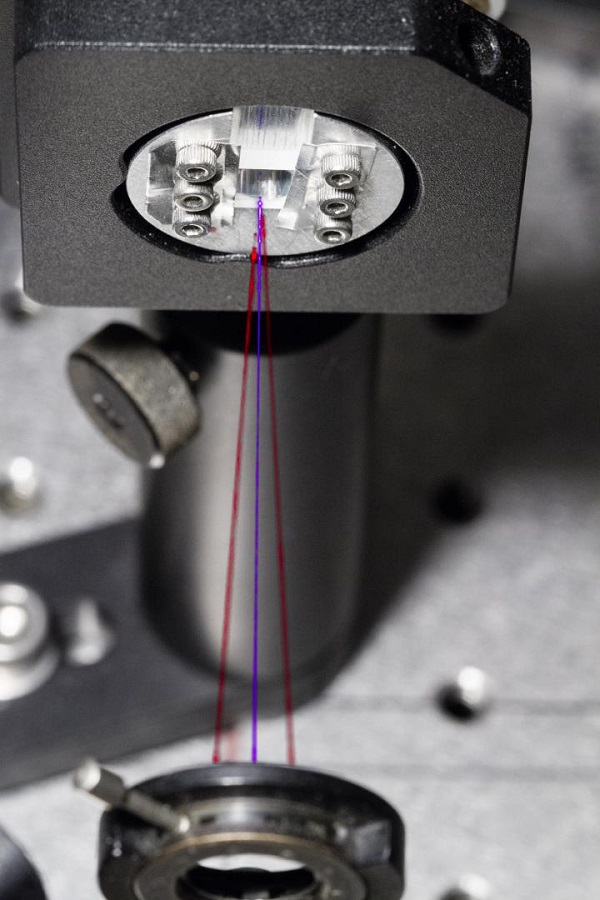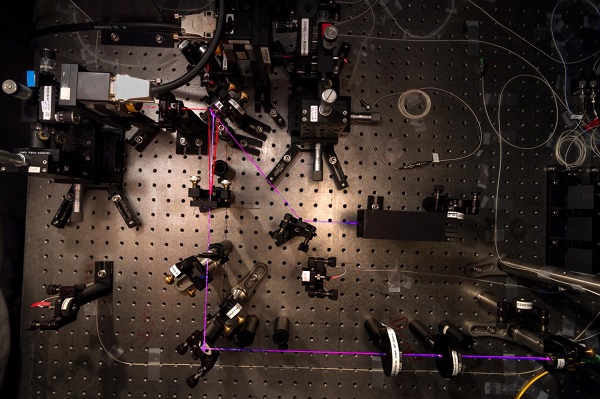Researchers from two universities thousands of miles apart have published a joint paper detailing a successful experiment in which the most extreme entanglement between a pair of photos has ever been recorded.

The researchers come from the Center for Quantum Technologies (CQT) at the National University of Singapore, and the University of Seville in Spain. Their achievement not only serves as validation of quantum physics, it also encourages confidence in theorized schemes based on this phenomenon, including quantum cryptography, quantum computing, and more.
“For some quantum technologies to work as we intend, we need to be confident that quantum physics is complete,” says Poh Hou Shun, who carried out the experiment at CQT. “Our new result increases that confidence,” he says.
For those unfamiliar, entanglement refers to two particles (in this case, photons) being married in a joint state. When they’re in this state, each one can be observed from afar as acting randomly on its own, but if you were to measure both at the same time, the particle’s behavior will record as being perfectly synchronized.
Albert Einstein famously referred to this correlation as “spooky action at a distance.”
In his lab, Poh and his team performed what’s referred to as a Bell test, which is in reference to a recent experiment in the Netherlands. Formally, it’s known as a “loophole-free Bell test”, and it’s meant to remove any possible wiggle room in a theory’s meaning; that is, entangled particles that behave randomly, and then synchronize without exchanging signals.
In Poh’s instance, rather than closing loopholes, he and his team designed a setup that pushes the entanglement towards its theoretical maximum. Specifically, they made entangled photons by shining a laser through a crystal. Doing this allowed the photons to interact with the crystal in a way that occasionally split a single photon into two, whereupon the new pair would emerge entangled. The team was then able to control the photons with a bunch of different lenses, mirrors, and other optical elements to optimize the effect and observe the results of this influence.

In total, 33.2 million optimized photon pairs were studied. Each one was split during its initial state into two entangled particles, and then measured separately; once the results of these tests were recorded, the correlation between the results was formally quantified.
For this variation of the Bell test, the strength of the correlation system is dependent upon whether or not the photons were truly entangled. While the measurements recorded were fairly complex, the team figured out how to reduce it all to a simple number, wherein any value bigger than 2 is evidence for quantum effects at work. This benchmark was set as such because in quantum physics, it’s believed that there is an upper limit, though, it is predicted it can’t get much bigger than 2sqrt(2) ~2.82843.
In the experiment at CQT, the team measured 2.82759 ± 0.00051 — within 0.03% of the limit.
Putting it into perspective — if the peak value was the absolute top of Mt. Everest, the measurement recorded in this experiment would be about eight-and-a-half feet below the benchtop marker.
Also worth pointing out from these experiments is that it disproves an extension to quantum theory proposed by Alexei Grinbaum, who stated that quantum physics is just an effective description of a more fundamental theory. He based this idea on a calculation he put together that determined a new limit on the correlation measure using tools from information theory. Specifically, he based his research on data like how much information an observer can hold about a two-particle system, and what the limit is on the correlation measure sitting just 0.1% under the quantum limit.
“You need a very precise measurement to be able to distinguish the quantum limit, and that was our achievement,” says Christian Kurtsiefer, a Principal Investigator at CQT and co-author on the paper. The team's result wound up exceeding the Grinbaum limit by enough to effectively rule out the model behind it.
In the end, the obvious question is what are the real world applications for this incredibly complex form of mathematics? There’s plenty actually — among some of the more immediate possible applications that quantum entanglement can be applied: secret messaging, and speeding up calculations. The team’s discovery that it is possible to reach the quantum limit for correlations is important for these sorts of technologies because their security and reliability is dependent upon the limit being fundamental.
To learn more, read the full paper Approaching Tsirelson's bound in a photon pair experiment, which was published in Physical Review Letters.
Via the Center for Quantum Technologies
Advertisement
Learn more about Electronic Products Magazine





